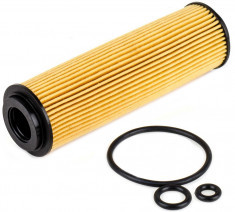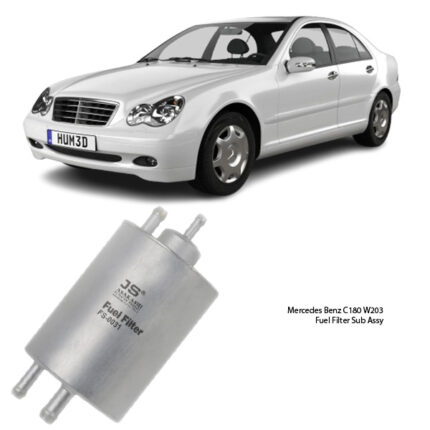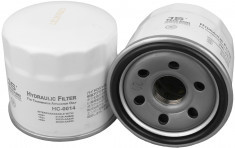-17%
Get Transmission Filter Subaru B9 Tribeca, Exiga, Forester, Impreza, Legacy, Pleo and R2
A transmission filter is an essential component within the transmission system of a vehicle. Its primary function is to filter out contaminants and debris from the transmission fluid, ensuring the fluid remains clean and the transmission operates efficiently.
Components of a Transmission Filter
- Filter Media
- Description: The filter media is the material that actually traps contaminants. It is typically made of a porous paper or synthetic material.
- Function: The media allows transmission fluid to pass through while trapping debris and contaminants.
- Filter Housing
- Description: The housing encloses the filter media and supports the structure of the filter.
- Function: It ensures the filter media stays in place and directs the fluid flow through the filter.
- Gasket or Seal
- Description: A gasket or seal is used to ensure a tight fit between the filter and the transmission case.
- Function: It prevents leaks and ensures that all the fluid passes through the filter media.
Benefits;
1. Filtering Contaminants
- Role: The primary function of the transmission filter is to remove contaminants from the transmission fluid.
- Mechanism: The filter media traps particles such as metal shavings, dirt, and other debris that accumulate due to wear and tear of the transmission components.
- Importance: By filtering out these contaminants, the filter prevents them from circulating through the transmission system, thereby reducing the risk of damage to the transmission components.
2. Maintaining Fluid Cleanliness and Quality
- Role: The transmission filter ensures the cleanliness of the transmission fluid.
- Mechanism: Clean fluid is crucial for effective lubrication, cooling, and operation of the transmission system. The filter keeps the fluid free of contaminants, maintaining its quality.
- Importance: High-quality, clean fluid reduces friction and wear on moving parts, prevents overheating, and ensures smooth operation.
3. Protecting Transmission Components
- Role: The filter protects various transmission components from damage.
- Mechanism: By trapping harmful particles, the filter prevents them from reaching sensitive parts such as gears, clutches, and valves.
- Importance: This protection helps in extending the life of the transmission components and prevents premature failure, which can be costly to repair.
4. Ensuring Smooth and Efficient Shifting
- Role: The filter contributes to smooth gear shifting.
- Mechanism: Clean transmission fluid ensures proper hydraulic pressure and smooth operation of the clutches and bands that engage and disengage gears.
- Importance: Smooth shifting enhances driving comfort and performance. It also reduces stress on the transmission, preventing potential damage from rough or erratic shifting.
5. Maintaining Hydraulic Pressure
- Role: The filter helps in maintaining the correct hydraulic pressure within the transmission system.
- Mechanism: The transmission relies on hydraulic pressure to operate clutches and bands. A clogged filter can restrict fluid flow, reducing hydraulic pressure.
- Importance: Proper hydraulic pressure is essential for the transmission to function correctly. Maintaining this pressure ensures reliable and consistent operation.
6. Preventing Overheating
- Role: The filter helps prevent the transmission from overheating.
- Mechanism: By ensuring clean fluid circulates through the transmission system, the filter aids in effective cooling of the transmission components.
- Importance: Overheating can cause severe damage to the transmission. Preventing overheating is crucial for maintaining the transmission’s performance and longevity.
7. Extending Transmission Life
- Role: The filter plays a key role in extending the overall life of the transmission.
- Mechanism: By continuously filtering out contaminants and ensuring clean fluid, the filter reduces wear and tear on the transmission components.
- Importance: This function is critical for reducing the frequency of repairs and replacements, thereby saving on maintenance costs and extending the transmission’s service life.
Signs of a Worn-Out Transmission Filter;
1. Transmission Slippage
- Symptom: The transmission slips out of gear or has difficulty staying in gear.
- Cause: A clogged filter restricts the flow of transmission fluid, which reduces the hydraulic pressure needed to keep the transmission engaged. This can cause the transmission to slip out of gear.
2. Delayed or Rough Shifting
- Symptom: Shifting gears becomes delayed, rough, or jerky.
- Cause: When the transmission filter is clogged, it can’t supply enough clean fluid to maintain proper hydraulic pressure. This can lead to delayed gear engagement or rough shifting.
3. Unusual Noises
- Symptom: Grinding, whining, or other unusual noises coming from the transmission.
- Cause: Debris in the transmission fluid can increase friction and wear on the transmission components, leading to unusual noises. A clogged filter can also cause the fluid pump to work harder, creating a whining noise.
4. Transmission Overheating
- Symptom: The transmission overheats, often indicated by warning lights or a burning smell.
- Cause: Poor fluid circulation due to a clogged filter can cause the transmission to overheat. Overheating can severely damage the transmission and reduce its lifespan.
5. Fluid Leaks
- Symptom: Transmission fluid leaking from the vehicle.
- Cause: A worn gasket or seal around the transmission filter can cause fluid leaks. Additionally, a clogged filter can cause pressure build-up, leading to leaks.
6. Check Engine Light
- Symptom: The check engine light is illuminated on the dashboard.
- Cause: The vehicle’s electronic control unit (ECU) may detect issues related to transmission pressure or flow due to a clogged filter, triggering the check engine light.
7. Loss of Transmission Performance
- Symptom: General loss of transmission performance, such as reduced acceleration and power.
- Cause: A restricted fluid flow can lead to insufficient lubrication and cooling of the transmission components, resulting in reduced overall performance.
8. Contaminated Transmission Fluid
- Symptom: Transmission fluid appears dirty or has a burnt smell.
- Cause: If the filter is not effectively removing contaminants, the transmission fluid will become dirty, reducing its ability to lubricate and cool the transmission.
9. Vehicle Entering Limp Mode
- Symptom: The vehicle enters limp mode, limiting its speed and power to prevent damage.
- Cause: Severe transmission issues, such as those caused by a clogged filter, can trigger the vehicle’s limp mode to protect the transmission from further damage.
Follow us on Facebook For more parts.



